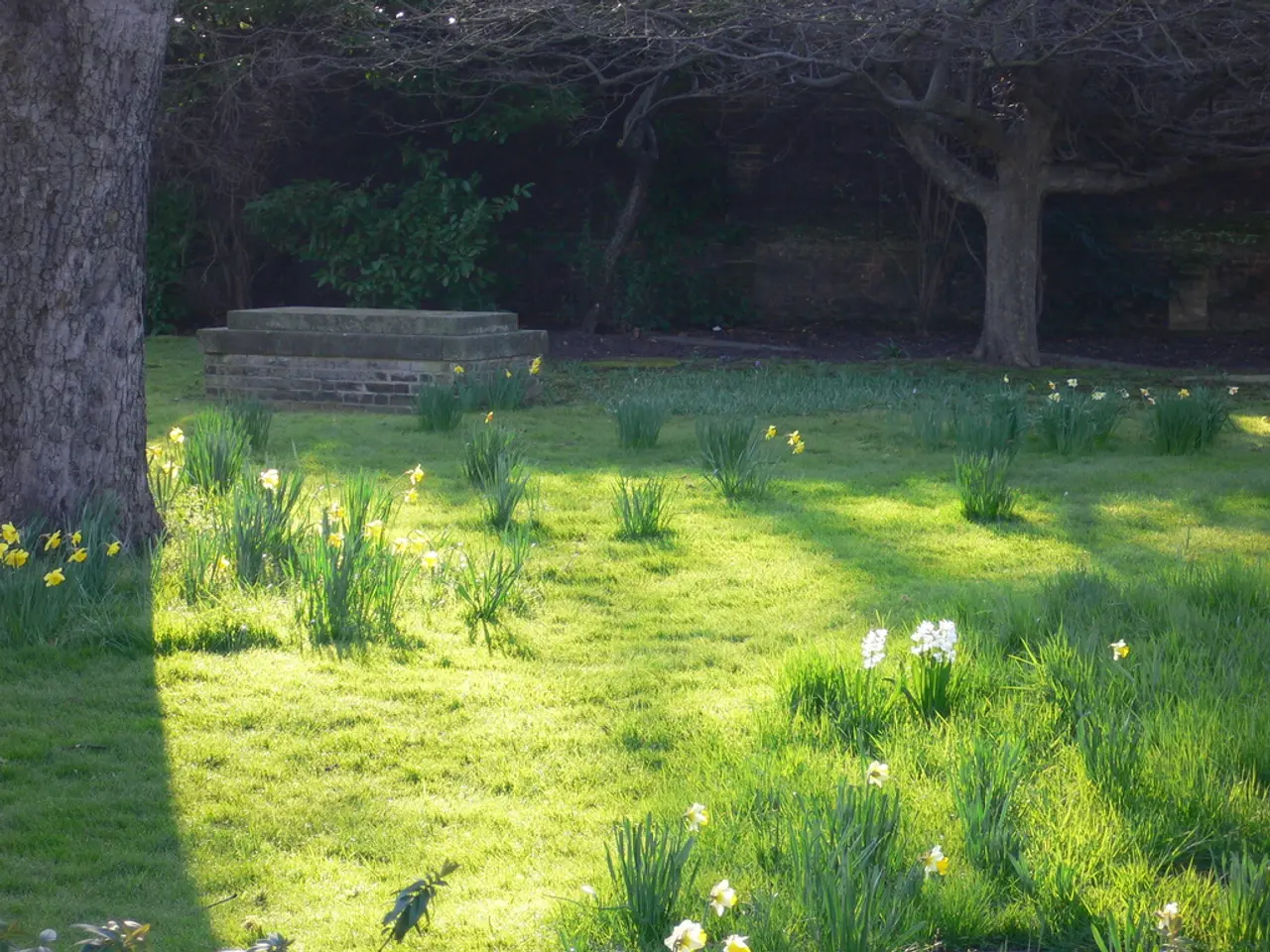A garden that might seem disorderly to some eyes, actually requires minimal upkeep, thrives wildlife and presents a breathtaking spectacle in autumn.
A Bavarian Garden Embraces Low-Maintenance, Nature-Inspired Gardening
Nestled in the heart of Germany, a garden of over 10,000 square metres in Bavaria embodies the low-maintenance, nature-inspired gardening ethos of Karl Foerster. The garden, created by Karin Winkler, is a testament to Foerster's vision, showcasing hardy grasses, drought-resilient plants, and designs that integrate seamlessly with the environment.
The garden encompasses an old orchard, with various fruit trees, a vegetable garden, and a collection of ornamental beds. The grounds are stony, moist, and well-drained, providing the perfect environment for Karin's preferred perennials.
One of the garden's highlights is the plant Eutrochium maculatum 'Riesenschirm,' a hardy giant that thrives in full sun and damp soil. Its height and spread are 2.5m x 90cm, and it remains upright throughout the winter. Another striking addition is the plant Sanguisorba 'Blackthorn,' which produces soft-pink bottlebrush flowers from late summer into October, enjoying moist soil and sun or light shade.
Ornamental grasses, such as Calamagrostis 'Karl Foerster,' are frequently cited as emblematic of this style, appreciated for their texture, movement, and ease of care. They contribute to tranquil, low-effort garden designs consistent with Foerster’s vision.
Karin's garden is unrestrained by design or planting dogmas and relies on her artistic bent and the countryside for inspiration. Stones can be an issue in the garden, and Karin uses the excavated pebbles to create little mounds within and on the edges of her borders - solid counterpoints to the loose planting.
The garden consists of variously sized island beds, some long and thin, others more rounded, but all substantial and organically shaped. Karin does all the gardening herself, relying on occasional assistance from a gardener. She lets the garden do its own thing after the first two years of a new border.
Examples of gardens embodying this style include Ryan Harter’s backyard xeric garden in Castle Rock, Colorado, and the drought-proof gravel garden in Surrey, UK, designed by Matthew Wilson. Both gardens reflect nature-inspired, sustainable gardening by featuring hardy grasses, drought-resilient plants, and designs that integrate with their environments through organic forms and minimal watering.
Karin's joyful approach is refreshing, reminding us that gardening can, and should, be what you want it to be. Winter is long and cold in the area, and the garden only starts to look summery in August. Often, the best time for sun and dry weather is autumn. Despite the challenges, Karin never feels the need to sit and contemplate, enjoying instead the close, more active connection with plants that gardening brings.
Other plants gracing the garden include Sanguisorba 'Scapino,' which bears a profusion of dark-purple flowers on wiry, upright stems; Rhus typhina 'Dissecta,' turning spectacular shades of yellow, orange, and red in autumn; Euphorbia palustris, starting off the season with fresh-green leaves that turn a rich orange-red in autumn; Symphyotrichum 'Ochtendgloren,' producing generous sprays of small pink flowers throughout the autumn; and Anaphalis margaritacea, producing clusters of white flowers in late summer that last through autumn.
Karin favours taller perennials such as eupatoriums, white willowherb, Silphium, Cephalaria gigantea, Cicerbita plumieri, Althaea cannabina, molinias, miscanthus, and Stipa gigantea. The garden is a testament to Karin's dedication to her craft and her commitment to creating a beautiful, low-maintenance space that reflects her love for nature and her passion for gardening.
- Upon visiting Karin Winkler's garden in Bavaria, one can appreciate the growth of various hardy plants like Eutrochium maculatum 'Riesenschirm' and Sanguisorba 'Blackthorn,' which thrive in the environment, contributing to the garden's organic appearance.
- Ornamental grasses, such as Calamagrostis 'Karl Foerster,' add textural interest and a sense of movement to low-maintenance, nature-inspired gardens like Karin's, fitting well with her vision for tranquil, sustainable designs.
- Sanguisorba 'Scapino' and Rhus typhina 'Dissecta' are among the plants gracing Karin's garden, adding seasonal color with dark-purple and vibrant autumn hues, respectively.
- As a testament to Karin's dedication, her home-and-garden lifestyle reflects a passion for gardening, horticulture, and nature, with various plants like Symphyotrichum 'Ochtendgloren,' Euphorbia palustris, and Anaphalis margaritacea thriving in her environment.
- Karin's garden design showcases how nature-inspired, sustainable gardening can be an engaging, personal lifestyle choice, maintaining a close connection with the environment, regardless of the challenges posed by the seasonal climate in her region.




